- Home
- Ron Foster
Sharecropping The Apocalypse: A Prepper is Cast Adrift Page 15
Sharecropping The Apocalypse: A Prepper is Cast Adrift Read online
Page 15
On that subject, Thayer writes with respect to Chris McCandless, “If he didn’t get any meat, couldn’t he just eat more lingonberries and get all his calories that way? Absolutely not. He would have needed to eat almost three gallons of lingonberries per day. He’d probably be vomiting before finishing the second quart. No matter how many lingonberries were available to him, his body would have only accepted them for a small portion of his caloric requirement. This doesn’t make lingonberries “poisonous”; the same is true of virtually every food, although the appropriate proportions vary… The concept that foods can be eaten only in appropriate quantities is taken so much for granted that, to my knowledge, it has never been given a name in the medical literature. I call it themaximum caloric proportion (MCP). Some foods have a very high MCP, such as milk, meat, and potatoes. They are easily digested and contain few antinutrients or toxins, thus they are suitable as dietary staples. Others, such as cabbage, rhubarb, and raspberries, cannot serve as staple foods and are only suitable to supply small portions of the diet. As one travels north, there tends to be fewer plants with a high MCP; this is why hunter-gatherers from northern latitudes ate meat for the great majority of their calories.”
As a result, if you can not find the right plants and gather it on a large enough scale, or have simply missed the gathering season, one typically has to resort to meat for the majority of the required calories. So, let’s look at some of what is required in terms of providing sufficient calories through hunting and fishing.
Opportunity Cost of Hunting and Fishing
Before we look at specific examples, it is important to note that when we speak of hunting and fishing, activities which require that you bring specific equipment into the woods, we have to look not only at what you can successfully hunt, but also at the opportunity cost of that equipment. What I mean by that is that for each pound of equipment which you bring with you, you have to forego a pound of some other resource which you could have brought with you instead. Since we are assuming a person who is otherwise prepared for the wilderness, the most immediate opportunity cost is food. For each pound of gear that you bring, you have to leave behind a pound of food. So, when you bring a 7 pound rifle with you, you could have instead left it behind and brought 7 pounds of food. So, when we look at the equipment one may bring for such hunting, we have to see not only if it can get us any food, but also whether the food we can procure with it is more than the food that we could have brought with us had we not brought the equipment.
To complicate things further, we have to look not only at the weight of the food, but more importantly at the caloric content of that food. So, a pound of squirrel meat will give us 752 calories. On the other hand a pound of instant mashed potatoes will give us 1,664 calories. For this post, I will use mashed potatoes as a base line for calorie dense food that could have been brought into the woods.
Fishing
First, let’s look at fishing. Fishing is a good way to procure calories because the equipment required is not heavy, and is relatively reusable. A large net, fishing rod, reel, lures, and a sizable spool of line will only add up to a few pounds. You guys have seen my lightweight fishing kit, which came in under one pound. A more robust and complete kit can be estimated to around 3 pounds. 3 pounds of gear has the opportunity cost (using the above base line numbers) of 4,983 calories, or about day and a half of food at the required 3,300 calories per day. From a simple numbers standpoint, this means that the first day and a half worth of food that you catch will go to offset the weight of the gear (which you brought rather than bringing food). Everything you catch after that is surplus.
The downside of fishing of course is the limited availability of resource reach areas. For example if you are lucky, and are in an area and the right time for a salmon run, as we saw from the above numbers, a single sockeye salmon will give you about two days worth of food. That means that the first salmon would offset the opportunity cost of the fishing gear, and every subsequent one will be pure food value. If you can catch one every two days, you will be able to meet your caloric requirements. The problem of course is that you may be a week late, and not find a single salmon because the run has ended; or, you may be in an area where no such fish is available; or you may be in an area where there is no body of water which carries any sizable fish at all.
Remember, it takes about 3.5 pounds of salmon per day to meet a person’s caloric requirements. If instead of a 7 pounds salmon, you were pulling out 3 ounce sunfish out of the water, the calculations would be very different. At approximately 50 calories per ounce of fish meat, you can do your own math to see how much fish you would need. I remember an episode of Ray Mears Extreme Survival where he caught a small fish while he was in the Rockies, and prepared it with some plants. It may seem like he has prepared a good dinner, but the reality is that the meal probably contains less that 300 calories, about a tenth of what is needed for the day if we are facing a long terms sustainability situation.
Even with all those considerations however, if you have selected an area close to a sizable body of water for your long term wilderness living situation, fishing is a good way to procure food because of the low weight and reusable nature of the gear, as well as the low amount of energy expenditure required.
Hunting
Now, let’s look at hunting as means of procuring food. Obviously, a hunter needs his tools. There are a lot of misconception from people who do not hunt that you can use primitive weapons, constructed in the woods, to effectively hunt. The difficulty of such a task is nearly always underestimated. Thinking that a person can construct a stick bow, or carve a longbow in the woods from an unseasoned piece of wood, and then go hunting with it in an effective manner is wishful thinking. Keep in mind that a hunter with a modern state of the art bow, with modern optics and range finder, will rarely take a shot at over 50 yards. If you are hunting with an improvised bow, lower that range to about 25 yards. Now, go measure out 25 yards and try to think of what it would actually take for you to get to within 25 yards of a deer. Then, think of what accuracy would be needed to hit a squirrel at 10 yards with that same bow. You will quickly gain a healthy appreciation for modern weapons.
Most people who are contemplating long term wilderness living will use some type of firearm, much like Chris McCandless did during his attempt. In recent years, Dave Canterbury, former co-host of Dual Survival, has popularized the single show 12 gauge shotgun as a weapon for long term wilderness living. In this post I will not address any issues regarding whether I believe that to be the best choice, but I will simply use it as a base line for purposes of discussion. A single shot 12 gauge shotgun weighs approximately 6 pounds (H&R Topper Deluxe with synthetic stock). Using the number we previously calculated for calories per pound of food which we could have brought into the woods (1,664 cal/lb), we can calculate that a 6 pound shotgun has the opportunity cost in terms of food of 9,984 calories, or about 3 days worth of caloric intake. That would mean that the first three days worth of food which you kill will go to offset the weight of the gun (keeping ammunition weight aside for now). So, if your trip is less that three days, even best case scenario (you being able to successfully kill enough game each day to meet the 3,300 calories per day requirement), you would be better off simply bringing your food with you. That way the availability of food is guaranteed.
For trips longer than three days, the gun would theoretically be the better bet, assuming you can secure enough food with it. So, let’s look at what that would entail. Let’s assume that you are now hunting small game with lightweight shotgun shells (2 3/4 shells with 1 oz load). Each such shell weighs 1.4 oz. So, for each shell fired, we have to add that weight to the opportunity cost, meaning, for each box of shells, we could have simply brought food with us. We than have to see if the numbers work out.
As I was saying, let’s assume you are hunting small game. As we established earlier, it would take 25 squirrels to provide enough meat for a day’s worth of calories (3,300 cal). K
illing 25 squirrels with the above ammunition would require 35 ounces of shotgun shells. Using our caloric value for instant mashed potatoes from above at 104 calories per ounce, the same 35 ounces if brought in the form of mashed potatoes instead of shotgun shells would give us 3,640 calories, more than what you would get from the squirrel meat. That means that if you are hunting squirrel with shotgun shells, you will never procure enough meat to offset the weight of the gear that you have to bring. You will be better off bringing food with you rather than the equivalent weight of ammunition. That is not to mention the weight of the shotgun itself, for which you could have brought an additional 3 days worth of food.
The numbers of course look much better when we consider larger game. If we are hunting rabbit, 4 of them would give us the caloric requirement for a day. That would mean we would have the expand 4 shotgun shells, at a total weight of 5.6 ounces. The equivalent weight of mashed potatoes will only give us 582 calories. In that instance, again, assuming perfect accuracy and availability of sufficient targets, the shotgun will be the better bet. The numbers of course look even better when hunting large game like deer.
A possible way to address the problem with small game hunting is to use different ammunition. While a shotgun shell weighs 1.4 oz, a .22LR cartridge weighs 0.1 oz. 25 squirrels will require only 2.5 ounces worth of .22LR cartridges, making it a viable option. The solution proposed by Dave Canterbury is to carry an adaptor, which inserts in the shotgun, allowing you to fire .22LR bullets. While the approach is viable in theory, if that is the route you chose to take, keep in mind that this is quite possible the least accurate way to fire a .22LR bullet. A non properly bedded, 10 inch rifled insert will give only marginal accuracy, made even more difficult by aiming only with the aid of a bead sight. You should adjust your ammunition count accordingly. After all, the goal here is to kill game, not to just fire ammunition.
Lastly, all of the numbers provided in this post assume 100% accuracy and unlimited availability of any particular resource. Obviously that is not the result in reality, but here I am assuming best case scenario. Success rates for hunting, or hunting strategies are beyond the scope of this post. The only thing I will say on the subject is to be careful when extrapolating success rates for a wilderness living situation based on anyone’s success rate when hunting closer to home. A lot of hunting these days is done on people’s personal property and close to civilization. That has a huge impact on game centralization. Food plots, open terrain of farms, fields, and roads are a great attractant to animals, which in turn become familiarized with people. Hunting in such an area is very different from going deep into the woods and attempting the same thing. One way is not necessarily better than the other, but there is a danger in trying to extrapolate your possible success rate when hunting in a wilderness living situation based on success rates in the woods behind the house.
Trapping
I have added a trapping section to the post since I first published due to several comments requesting information on the subject. The reason why I didn’t originally include a section on trapping is that an animal caught through trapping has the exact same caloric value as an animal caught through hunting. The ease of hunting, trapping, or gathering is beyond the scope of this post. For all of the numbers I have presented here, I have assumed 100% success rate and infinite availability of the particular resource.
I will discuss a few of the legal issue involved with trapping, but I will mention a few things here.
First, it is very hard to get data on trapping in the wilderness. The reason is that most trap lines are run close to home for reasons I will explain in the section on legal considerations. As a result, it is hard to find data from an actual wilderness trap line, so some of the aspects of trapping during long term wilderness living are hard to address.
Also, just like with hunting, be careful when extrapolating success rates for wilderness trapping conditions based on trap lines run close to home. Around where I live, there are large numbers of raccoons. I saw five of them walking through the parking lot two weeks ago. It is a different story when you are actually in the forests.
As I will explain below, trapping, just like hunting, requires gear. You will have to bring your traps with you. What traps you use and their size will vary greatly depending on what animal you are trapping and where you are doing it. Factor that weight into your calculations and determine the opportunity cost to see if the numbers work out under the specific conditions.
Legal Considerations
Lastly, we have to get back to that issue which we put to the side earlier, the law. Assuming we do not wish to be poachers, and are actually contemplating living in the wilderness within the real world rather than some imaginary scenario, we have to comply with regulations. Hunting seasons will vary trough different areas, but for most species, especially large species, it will be quite limited. For example, in the State of New York (southern region), deer and bear seasons are from Nov 16 – Dec 8; turkey season is from Oct 1 – Nov 15 in the fall and May 1 – May 31 in the spring; cottontail rabbit is from Oct 1 – Feb 28; gray and fox squirrel is from Sept 1 – Feb 28; grouse is from Oct 1 – Feb 28, etc. There are a few species that can be hunted year round, such as red squirrel, porcupine, rock pigeon, and woodchuck. As you can see however, the limitations are severe.
Above we calculated that a mature white tail buck will give us about 21 days worth of calories if properly processed and preserved. Let’s assume that you can supplement it with other sources of food, and extend that time to a month. If you are hunting deer lawfully, that would mean that to provide sufficient calories for the full year, between the dates of Nov 16 – Dec 8, you will have to kill 12 mature deer in that 3 week period. You have to average 4 deer per week. The practical difficulty with such a task is not the only problem. Most states have restrictions on the number of deer that can be harvested. In NY it is usually 1 or 2 per year.
Now, using New York State as an example, let’s see if the necessary calories for a person for a period of one year can be legally acquired through hunting. The generally available large game would be deer, bear, and turkey. In certain areas, the hunting of other large game like elk, moose, duck and geese may be legal and available. In NY we have good access to duck and goose hunting, but no elk or moose hunting. So, let’s look at the generally available game. Let’s assume that you have two buck tags, one bear tag and four turkey tags (two spring and two fall).
One black bear gives us 68,800 calories. Two bucks, at 59,360 each will give us 118,720 calories. Four turkeys at 7,200 calories each gives us 28,800 calories total. Combined, the bear, deer, and turkey give us 216,320 calories for the annual hunting season.
The caloric requirements for one person for one year based on the 3,300 daily requirement we used above, would give us 365 days times 3,300 calories per day, for a total of 1,204,500 required calories per year.
So, assuming you are a skillful hunter, and luck was on your side, and you managed to fill all of your tags (one black bear, two deer, and four turkey), that will still leave you at a caloric deficiency for the year of 988,180 calories. In other words, you will have no food for 299 days out of the year. If available in your area, you may be able to decrease the deficit by hunting other large game if available, like elk, moose, and duck, although, it appears that a large deficit will remain.
Just to give some perspective, assuming that a duck or goose provides the same amount of calories as a turkey, it would require 137 ducks or geese to satisfy the above caloric deficit (assuming no legal limit on the number you can harvest). Assuming you are hunting those ducks with a 3 inch shotgun shell with a 1 3/4 load, which weigh 2.2 oz each, and assuming perfect accuracy, that would require about 19 pounds of ammunition.
On the other hand, you will have to kill or trap a whole lot of squirrels to make up for the deficiency, approximately 7,486 squirrels, which if hunted with .22LR ammunition, and assuming perfect accuracy, would require about 47 pounds of ammunition.
<
br /> Trapping is also an option, but you have to keep a few things in mind. First, trapping, just like hunting is regulated and only allowed during certain seasons. Second, the way you can trap is heavily regulated. Deadfalls, snares, hooks on trees, and virtually all DIY traps are not allowed. The regulations are very specific as to exactly what trap you must use for each animal. Third, trapping is generally only allowed for furbearers. In most areas you are not allowed to trap game animals. Some furbearers like beaver are edible, others not so much. Last but not least, regulations typically require that you check all of your traps every 24 or 48 hours. For most people that places serous restrictions on where traps can be placed and limits the size of the trap line. The result is that most trap lines are run close to home with the few exceptions for people who travel deep into the woods and then live there for the trapping season.
The alternative is that you need to systematically exploit another abundant resource such as large scale gathering and processing of acorns when in season, or moving to take advantage of large scale fish migrations and then catching them with nets, fishing wheels, etc. where the law allows.
Do the numbers work out? You do the math. I think we get a better appreciation for why high calories foods such as pemmican and corn meal were so highly valued and commonly carried by woodsmen in the past.
I don’t write this to discourage anyone from attempting the challenge, nor do I believe it to be impossible. In this post I am simply attempting to provide some more solid data that can be used to make a realistic evaluation of exactly what it would take to thrive alone in the wilderness. As Thayer writes: “In a long-term subsistence situation, food is the priority. In former times, the native people of the Far North planned each move according to food availability… In a short-term survival situation, food is of minor importance. However, in long-term survival or “living off the land,” it is of paramount importance.”

 Spectre Island- Time Is Running Out!
Spectre Island- Time Is Running Out! Apocalyptic Apothecary
Apocalyptic Apothecary Our End Of The Line
Our End Of The Line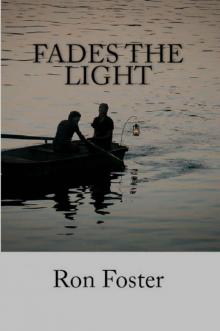 Fades The Light: The Prepper Reconstruction
Fades The Light: The Prepper Reconstruction Clem's Contrivance: Terrorist Fiction In The Deep South (The Apocalyptic Rifle Book 1)
Clem's Contrivance: Terrorist Fiction In The Deep South (The Apocalyptic Rifle Book 1) Diary Of A Kudzu Salesman: Survival And Recovery After The Electrical Grid Collapse (Prepper Reconstruction Book 2)
Diary Of A Kudzu Salesman: Survival And Recovery After The Electrical Grid Collapse (Prepper Reconstruction Book 2) The Ridiculously Simple Survival Book
The Ridiculously Simple Survival Book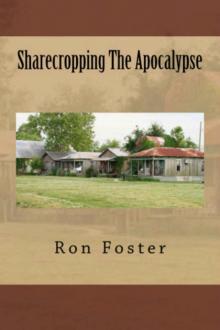 Sharecropping The Apocalypse: A Prepper is Cast Adrift
Sharecropping The Apocalypse: A Prepper is Cast Adrift The Savage Awakening (A preppers Perspective)
The Savage Awakening (A preppers Perspective)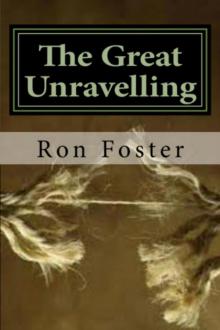 The Great Unraveling (A Preppers Perspective Book 1)
The Great Unraveling (A Preppers Perspective Book 1) An Old Man And His Axe: A Prepper fiction book of survival in an EMP grid down post apocalyptic world (Old Preppers Die Hard 1)
An Old Man And His Axe: A Prepper fiction book of survival in an EMP grid down post apocalyptic world (Old Preppers Die Hard 1)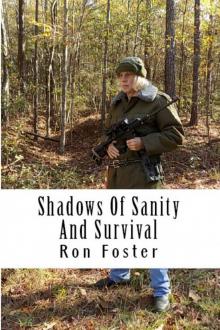 Shadows Of Sanity And Survival (Old Preppers Die Hard Book 3)
Shadows Of Sanity And Survival (Old Preppers Die Hard Book 3)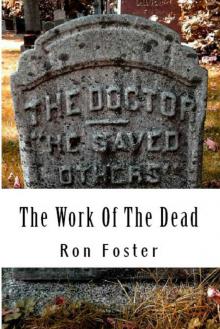 The Work Of The Dead: A Post Apocalyptic Prepper Fiction Series (Aftermath Survival Book 1)
The Work Of The Dead: A Post Apocalyptic Prepper Fiction Series (Aftermath Survival Book 1)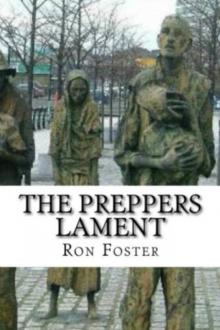 The Preppers Lament
The Preppers Lament Our End Of The Lake: Surviving After The 2012 Solar Storm (Prepper Trilogy)
Our End Of The Lake: Surviving After The 2012 Solar Storm (Prepper Trilogy) Beyond The Burning Shore: Searching For Survival
Beyond The Burning Shore: Searching For Survival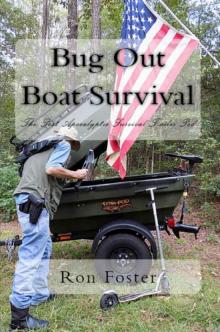 Bug Out Boat Survival: The Post Apocalyptic Survival Trailer Pod (Aftermath Survival Book 3)
Bug Out Boat Survival: The Post Apocalyptic Survival Trailer Pod (Aftermath Survival Book 3)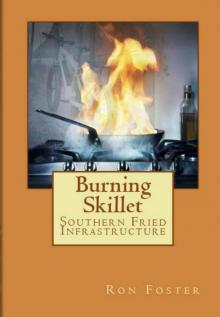 Burning Skillet: Southern Fried Infrastructure (Grid Down Prepper Up Book 2)
Burning Skillet: Southern Fried Infrastructure (Grid Down Prepper Up Book 2) The Solitary Man’s Refuge
The Solitary Man’s Refuge A Pox Upon Us
A Pox Upon Us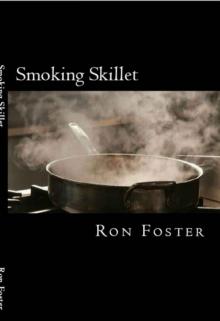 Smoking Skillet
Smoking Skillet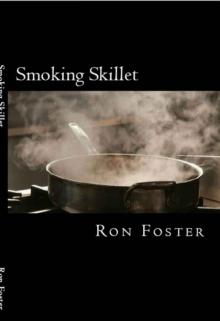 Smoking Skillet: A Recipe For Societal Collapse
Smoking Skillet: A Recipe For Societal Collapse Empty Aisles & Empty Hearts (Preppers Perspective Book 3)
Empty Aisles & Empty Hearts (Preppers Perspective Book 3)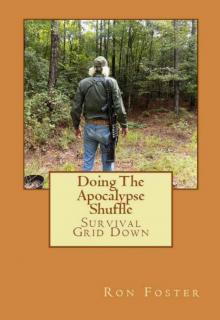 Doing The Apocalypse Shuffle: Southern Prepper Adventure Fiction of Survival Grid Down (Old Preppers Die Hard Book 2)
Doing The Apocalypse Shuffle: Southern Prepper Adventure Fiction of Survival Grid Down (Old Preppers Die Hard Book 2)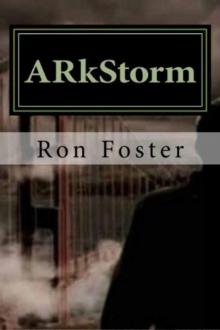 ARkStorm: Surviving A Flood Of Biblical Proportions
ARkStorm: Surviving A Flood Of Biblical Proportions